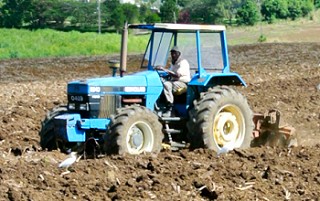Sugar Production
Sugar has been an ideal crop for Barbados. White gold as it was called, produced great wealth, fame and stature for the island and the original plantation owners, and was in many ways suited to the island.
It made good sense to grow sugar economically and horticulturally as its root structure helped to preserve the fragile top soil.
Agriculture And Soil Preservation

Sugar cane planting has been modified over the centuries to help preserve the fragile top soil from erosion, but soil erosion continues to be a problem in many parts of the island particularly on the east coast.
Sugar grows tall, its fibrous roots spread out and help to bind the thin layer of soil, a mixture of volcanic ash and sands, deposited over the years by winds bringing seeds, and ash and flora from neighbouring islands and distant lands. Some say up to 30 tons of ash per acre as a result of volcanic activity have been recorded. The Coral Island of Barbados, pushed out of the sea millions of years ago, owes much to the active volcanoes in the region.
Plantation owners grew other crops between the rows of tall sugar canes. The fields were edged with ditches so that water and earth running off collected and was not lost. The practice still exists for many crops.
Sugar Cane Research
Early in 1888 Barbados established a cane research laboratory that pioneered in developing new strains of cane that were resistant to pests and adaptable to various climates.
Barbados was first to discover how to propagate plants from the seeds of the cane arrows. It led the world in cane research which helped to make the island the foremost producer of sugar in the Caribbean, and the birthplace of rum.
Speaker 1: Sugarcane breeding started in Barbados in 1888. The oldest institution doing this in the world. On top of that, Barbados was the place that discovered that you could actually collect real seed from these arrows and grow it into sugarcane.
Speaker 1: That fact was discovered, that you could actually grow sugarcane plants from the seed collected from the arrow, discovered here in Barbados in 1858. So, Barbados has a lot to be proud of when it comes to sugarcane.
Speaker 2: The latitude and longitude of Barbados is very similar in this part of the hemisphere to that in the Southern hemisphere where canes actually originated. So, hence, breeding is more successful in Barbados because we can get cane to arrow.
Speaker 2: This cane breading station has also done some unique things in that those fellows who are not cooperative in arrowing, they can actually adjust them to arrow.
Speaker 2: Station actually has got up lights over the top of the fields, and they actually switch on the lights above the field to induce them to arrow.
See more lifestyles like this at Barbados People and Lifestyles - Sugar Plantation









